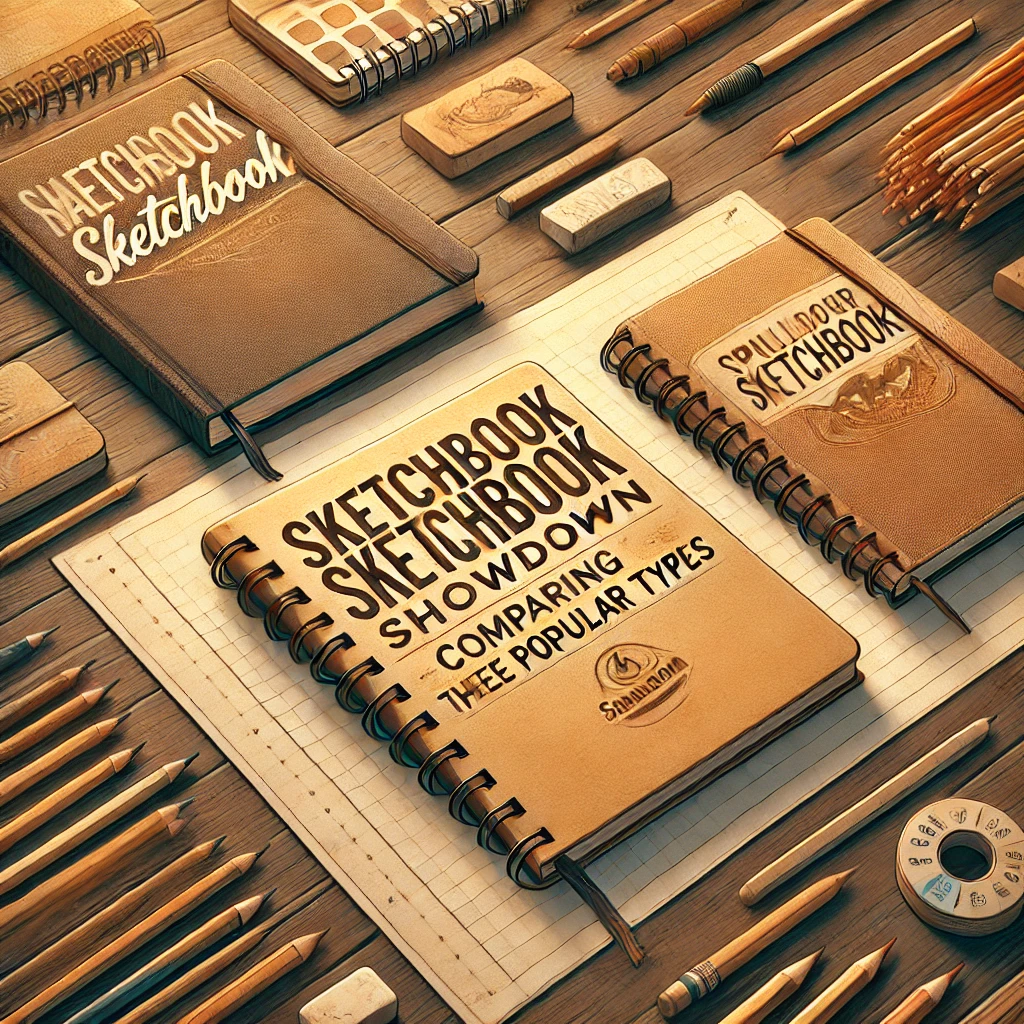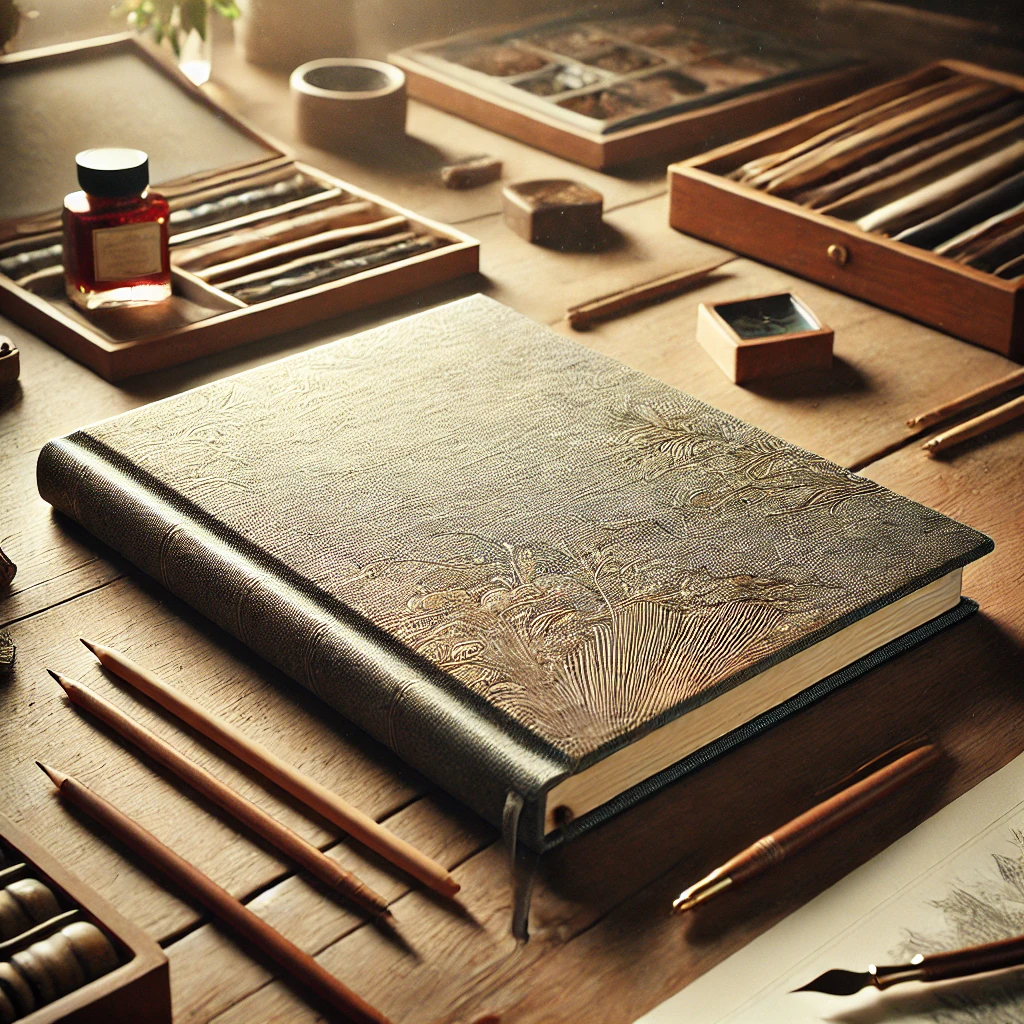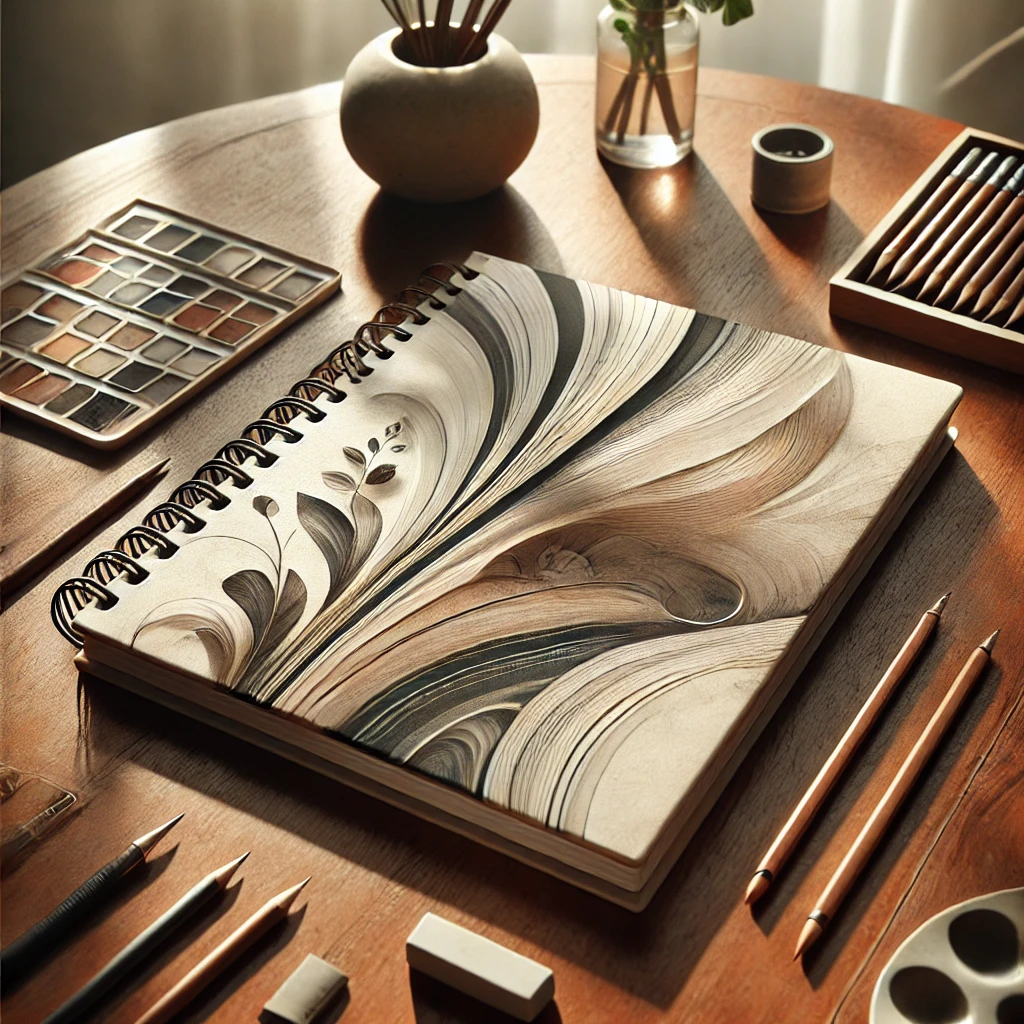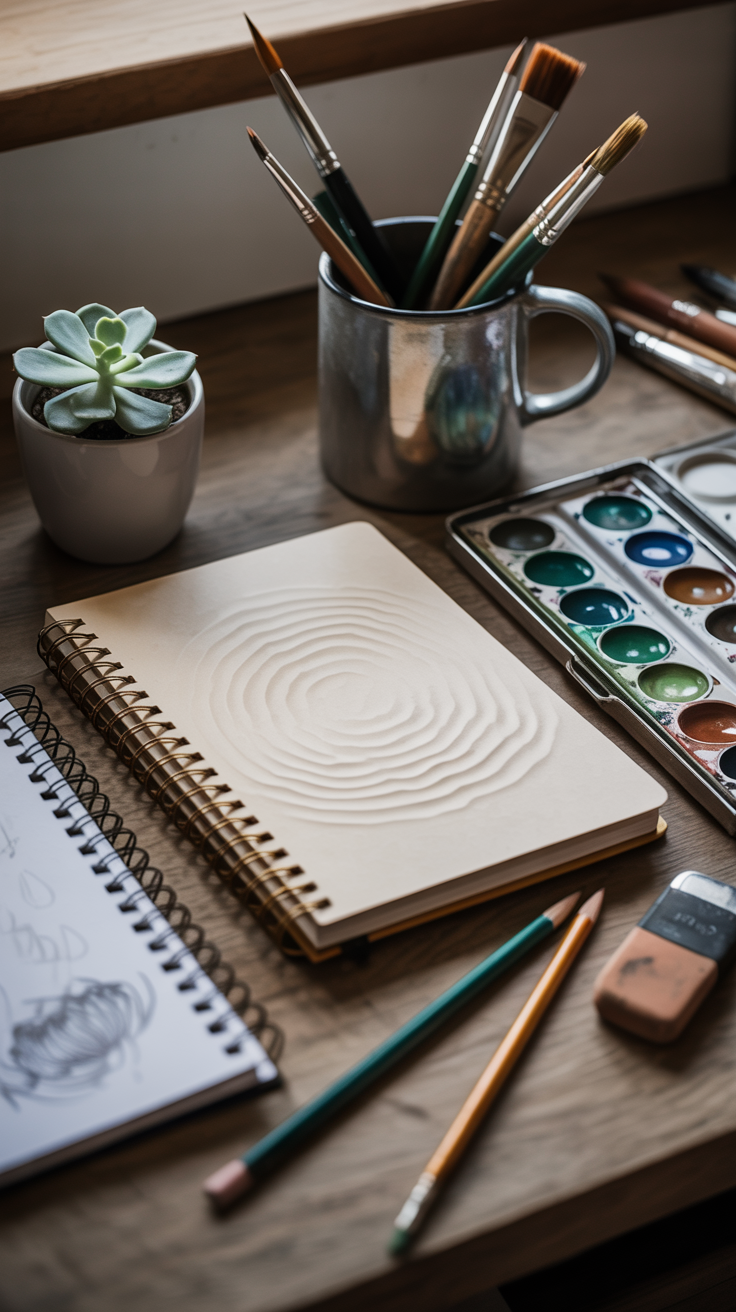When it comes to sketching, choosing the right sketchbook can make all the difference in your creative process. Whether you’re an aspiring artist, a seasoned illustrator, or someone who enjoys doodling, the type of sketchbook you use affects your line work, shading, and overall drawing experience. In this guide, we’ll compare three popular types of sketchbooks to help you find the best fit for your artistic needs.

1. Hardcover Sketchbooks: The Classic Choice
Best for: Artists who prefer a sturdy and durable sketchbook for everyday use.

(This blog contains affiliate links, meaning I make a small commission at no extra cost to you.)
Features:
- Thick, high-quality paper ideal for various media.
- Sturdy hardcover provides excellent protection for your artwork.
- Often includes an elastic closure and a ribbon bookmark for convenience.
Pros:
✔️ Durable and long-lasting.
✔️ Keeps artwork safe from bends and creases.
✔️ Lays flat for comfortable sketching.
Cons:
❌ Heavier and less portable.
❌ More expensive than softcover alternatives.
🔹 Product Recommendation: Strathmore 400 Series Hardcover Sketchbook – Ideal for pencil, charcoal, and ink drawings.
2. Spiral-Bound Sketchbooks: Flexible & Convenient
Best for: Artists who prefer an easy-to-flip, lay-flat design for quick sketching.

Features:
- Perforated pages for easy removal.
- Flexible and allows for a complete 360-degree fold.
- Available in various paper types, from smooth to textured.
Pros:
✔️ Affordable and widely available.
✔️ Great for practice sketches and quick studies.
✔️ Pages can be torn out without damaging the binding.
Cons:
❌ Less durable, with pages more prone to tearing.
❌ Spiral binding can get in the way of drawing on the left-hand page.
🔹 Product Recommendation: Canson XL Mix Media Spiral Sketchbook – Great for mixed-media sketches, including watercolor and markers.
3. Softcover Sketchbooks: Lightweight & Travel-Friendly
Best for: Artists on the go who need a portable and flexible sketchbook.

Features:
- Lightweight and easy to carry.
- Flexible cover makes it fit into any bag.
- Often has smooth or textured paper options.
Pros:
✔️ Compact and perfect for travel.
✔️ Affordable compared to hardcover sketchbooks.
✔️ Offers a flexible cover for casual sketching.
Cons:
❌ Less protection for artwork.
❌ May not lay flat easily while sketching.
🔹 Product Recommendation: Moleskine Art Collection Softcover Sketchbook – A sleek and stylish option for minimalist artists.
🎨 Final Thoughts: Which One is Right for You?
- Choose a hardcover sketchbook if you need durability and long-term artwork storage.
- Opt for a spiral-bound sketchbook if you want flexibility and easy page removal.
- Pick a softcover sketchbook if you prioritize portability and lightweight convenience.
No matter which type you choose, investing in the right sketchbook will enhance your creative journey!
📌 Pin & Share!
Loved this guide? Save it to your Sketching Inspiration board on Pinterest and share it with fellow artists! 🎨✨
🛍️ Shop Your Favorite Sketchbooks: Browse our handpicked recommendations and find the perfect sketchbook for your next masterpiece. Click here to explore top-rated sketchbooks!
✍️ What’s your go-to sketchbook? Drop a comment below and let’s chat about your favorite art supplies!